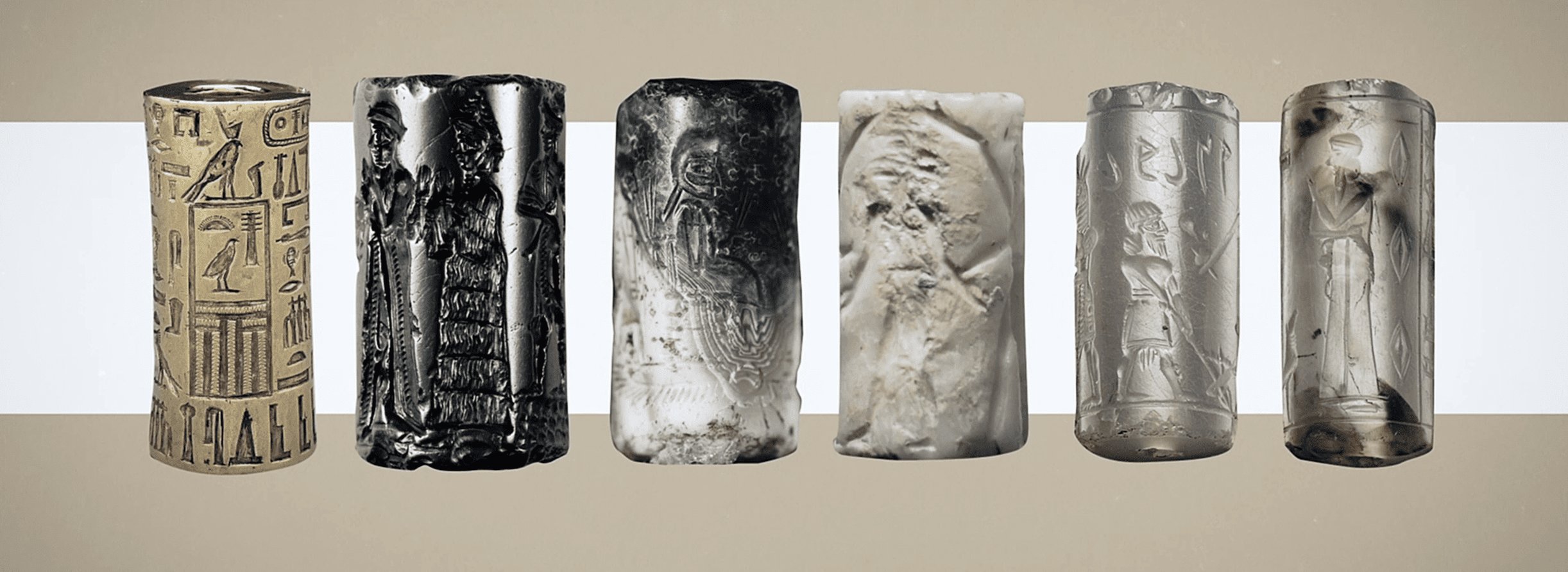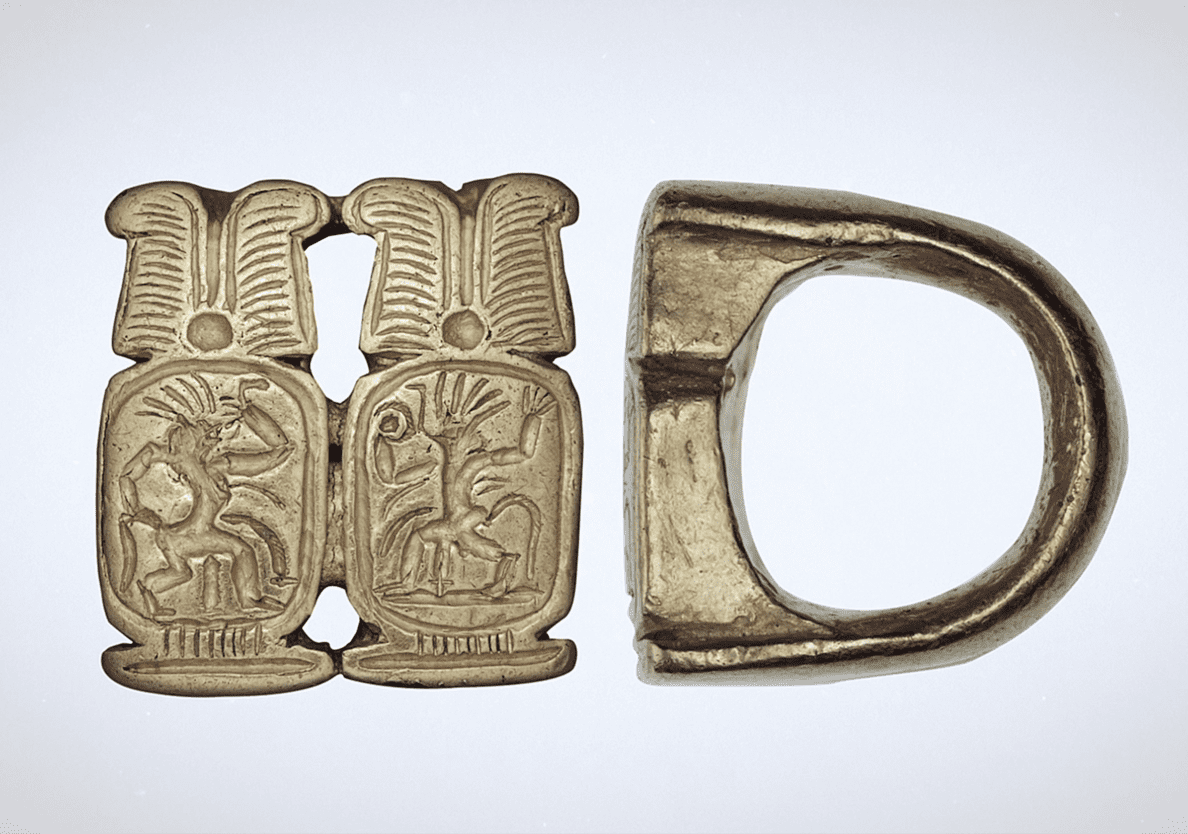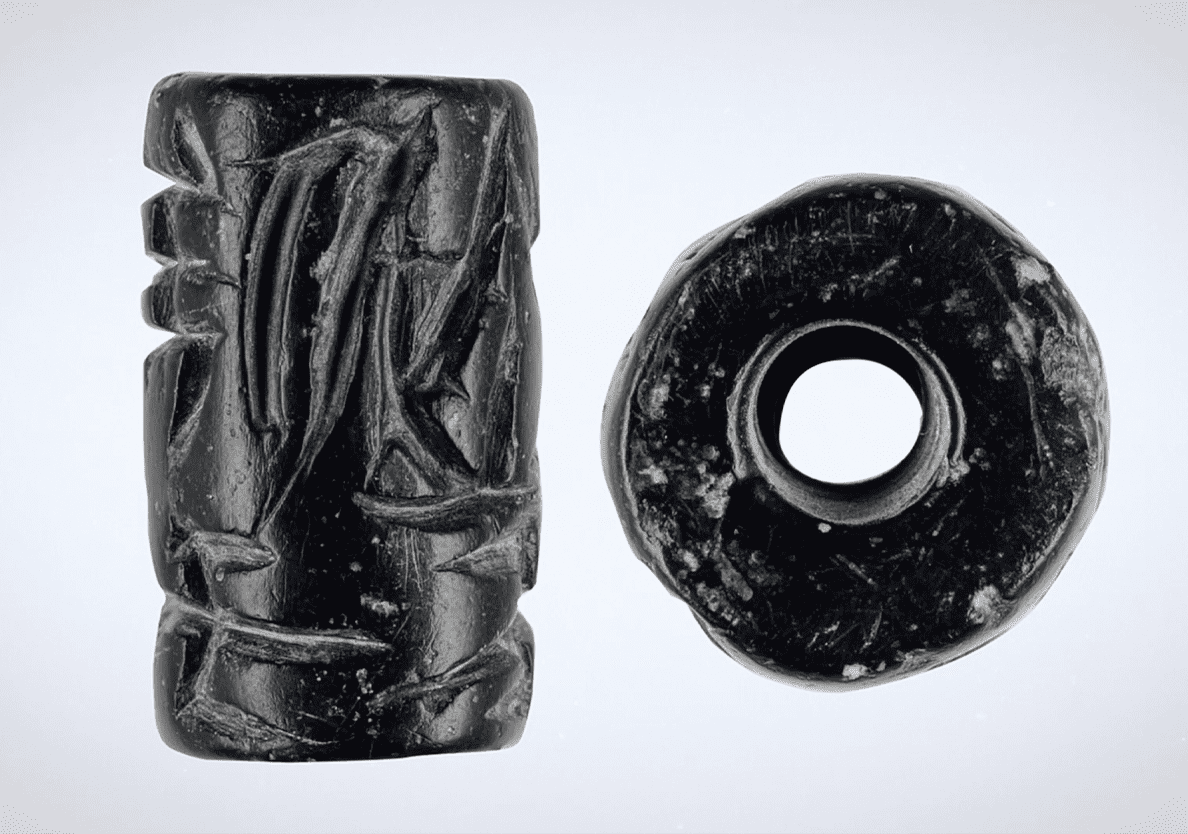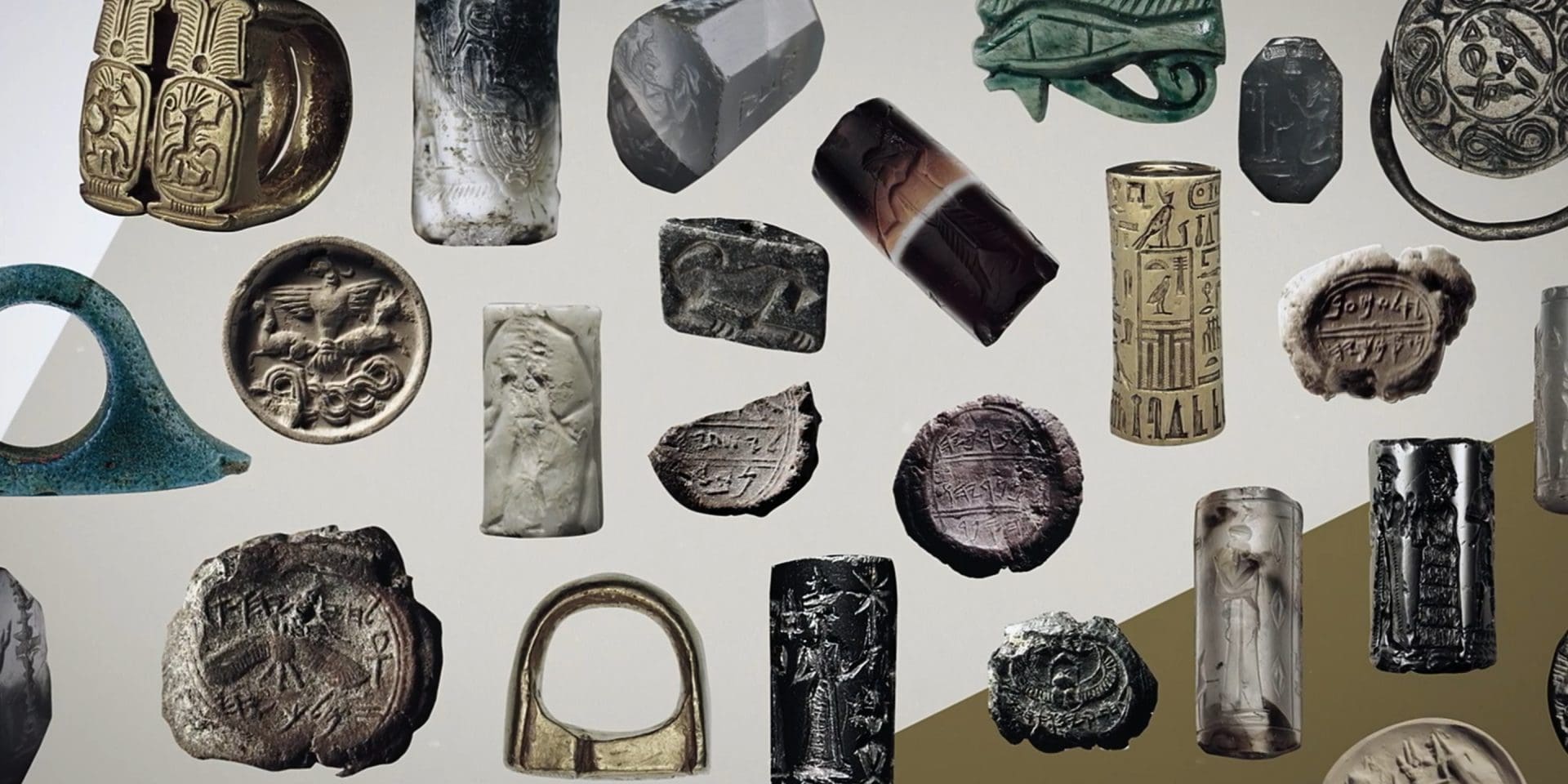In the times of the Bible, documents like peace treaties, sale of land certificates, business transactions, adoptions, marriages and the like were authenticated using the ancient version of the signature: a seal. Ancient seals as we know them came in two forms: (1) the signet or stamp type, and (2) the cylinder type. They were used to impress wet clay in any form (documents, jars, lumps) by either stamping or rolling.
Seals were miniature works of art that ranged from 0.5 inch to 1.5 inches tall (even smaller for some stamp or signet styles), and were painstakingly carved from stone, though there are examples of glass, bone, and precious metal stamp type seals. The material or stone type that was chosen may also have had meaning, with a certain kind of stone being chosen for a perceived benefit or property.
“Cylinder seals were in popular use in Mesopotamia from around 3400-400BC, three thousand years of prominence eventually put to rest by writing materials.”
The artists that dared to create them, not only had to work in reverse for the seal to impress properly, each seal had to be unique, distinct enough to serve as a recognizable signature for its owner, as individual as the person themselves. Seal artists also utilized individuality in the stones themselves to make their work stand out. There are examples of seal designs incorporating marks, splashes of colour and lines naturally occurring in the stone to enhance their seal’s appeal.

These stone signatures were worn in several ways. Signet types were often mounted in a ring and were either worn on the finger or hung on a necklace. Cylinder seals had a hole drilled through their centre like a bead, through which a mounting pin would be placed so that it could be worn in a few different fashions. Most commonly in a necklace, bracelet or on a clothing pin.


Thousands of seals and seal impressions have been found from antiquity. It’s believed that the oldest seal ever found is a signet type from the 6th millennium BC. Cylinder seals were in popular use in Mesopotamia from around 3400-400BC, three thousand years of prominence eventually put to rest by writing materials. Clay as a writing material was slowly replaced by papyrus paper, which would be bound and sealed with a lump of clay that was easiest to stamp. Within the heyday of the cylinder seal however, signet seals were also in use, especially important for the Bible during the 1st millennium BC, the time of the kings of Israel and Judah. Seals appear in many Biblical passages, most often reflecting their general use of giving someone’s authority to a transaction or document, but also sometimes in symbolism.
Famously in the Song of Solomon, the female speaker asks to be placed, “….like a seal over your heart, like a seal on your arm; for love is as strong as death, its jealousy unyielding as the grave….” (Song of Solomon 8:6) This verse seems to reflect the practice of seals being buried with their owners; as seals represented the essence of their owners, they were common grave goods. So, the love of the romantics in the Song went beyond the here and now into the next life.

Corie Bobechko is a daily co-host, speaker, and writer of Bible Discovery. She also hosts a YouTube channel that shows how history and archaeology prove the Bible. Her heart for seekers and skeptics has led her to seek truth and share it with others. Corie also has a Bachelor of Theology from Canada Christian College.






